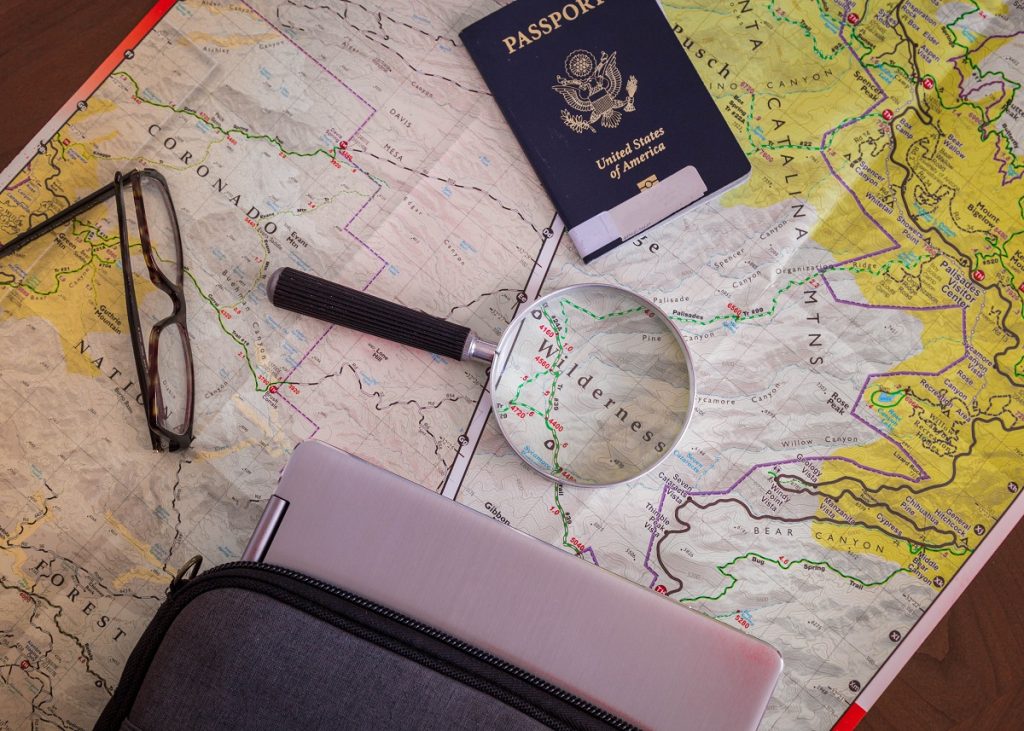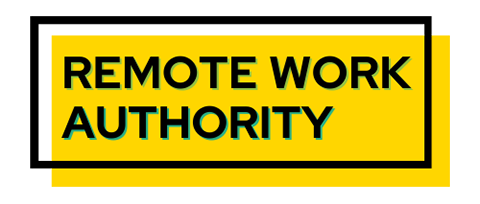As more workers were freed from their offices by the pandemic, many took their work to foreign countries. Many countries welcomed the workers but developed digital nomad visas so they could work there legally. Obtaining one requires that the worker be employed in a position that pays a minimum monthly salary.
Working a job you love in a foreign country is a dream come true for an increasing number of people. Making it a reality requires planning and taking a number of steps that start with securing a digital nomad visa.
The life of a digital nomad appeals to many people with flexible jobs that can be performed anywhere. Some people get interested in this concept when they go on vacation to a place where they’d love to stay, while some experimented with this lifestyle during the pandemic when they were told to work from home. They decide to set up shop abroad.
Unfortunately, this is Illegal in many countries. Most Americans go to other countries with a passport and perhaps a travel visa. What is required to work in a foreign country is a digital nomad visa.
Table of Contents
Why Is A Digital Nomad Visa Necessary?
Americans who ask this question need only look at attitudes about foreigners who come to the US and work. Even those who apply to enter the country legally are viewed dimly as people taking jobs away from Americans and using American resources. Those who enter the country illegally are viewed with even greater reproach. There is great fear that they will require resources, such as health care, housing, welfare benefits, that some feel are better reserved for citizens.
The same concerns could be voiced about those who go to a foreign country on a travel visa and stay there to work. If they don’t make enough money on their remote jobs, how will they support themselves? Will they pay taxes as local people do? Will they be a burden on local healthcare systems?
In reality, digital nomads pump up the local economy so long as they have a stable income, and many countries try to attract them. Nomads typically spend 35% of their income in the local economy, so most countries are happy to have them. The visas identify the temporary residents who often do not have to pay local taxes for an extended time, although they are expected to pay U.S. taxes.

Even if countries want nomads to come, they don’t want people who don’t contribute to society. Many countries have addressed these issues by issuing special Digital Nomad visas to those who want to work in their country. As of November 2022, 49 countries offered this type of visa, and the number is growing.
These specific requirements vary, but the documents spell out who is welcome, what their monthly income must be, and how long someone can stay in the country.
A closer look at digital nomad visas will dispel any notion that the typical digital nomad is somebody backpacking with only their computer and some pocket change. Current statistics from Project Untethered estimate that the typical digital nomad makes between $50,000 and $99,900 annually, with an hourly wage between $10 and $30 hourly.
What Is The Digital Nomad Visa?
A digital nomad visa is documentation available to workers and students that authorizes them to stay in the country for an extended time, such as 1-5 years. As 71% of current digital nomads anticipate living this lifestyle for one year or, quite commonly, two to three years, a digital nomad visa allows them enough time to carry out their plans.

Some programs offer a path to citizenship in a new foreign country, but most do not. Depending on the country, the visa may provide benefits such as a health care card 2 digital workers.
Many countries formalized digital nomad visas as COVID freed many workers to their jobs outside of the office during pandemic closings. The name of the programs vary by country.
What Is The Difference Between A Digital Nomad Visa And A Tourist Visa?
Tourist visas are typically issued within a short time such as a month. In the past, many visitors who wanted to stay in the country longer than the time the visa permitted would do “visa runs,” where would leave the new country for a short time and re-enter it for as long as their visa would require. This was costly for travelers and put them at risk that they would be denied reentry into the country.
For some countries, a tourist visa remains the best choice,
What Are The Requirements For Digital Nomad Visa?
Most countries have three basic requirements to qualify for a digital nomad visa:
- You must be over 18
- You must have a specific monthly income that varies by country
- You must have a job you can do anywhere in the world.
Applying For The New Digital Nomad Visa
Prospective digital nomads can apply online for the visa, but securing it usually requires an appointment at an embassy or consulate and the payment of a fee
Applicants must submit the following documents with their application:
- Digital nomad visa application form
- Valid passport
- Photo ID
- Proof of health insurance
- Proof of the source
- Amount of income
- Proof of employment and evidence of remote work assurance, such as contracts, client lists, business licenses
- Civil documents, including birth certificate CV, qualifications
Digital nomads who want to travel as a family may be able to apply for their spouse and children, but not for extended family members.

The fee to apply typically runs between $200 to $2000 though some areas such as the Republic of Georgia have no fee. The fees are particularly high in Caribbean countries such as from Antigua, Barbados, and Barbuda, where they top $3,000 for a family.
The visa can take several months to be processed. Not all applications are approved. The most likely reasons for refusal include:
- Conviction of a crime
- No job
- Income falls below the required annual income requirement
- False information on the application
As digital nomads typically spend 35% of their income in the local economy, most countries are happy to have them. Most areas do not tax digital nomads for an extended time, although they are expected to pay the U.S. income taxes.
Which Foreign Countries Offer Digital Nomad Visas?
The list is ever-expanding as more countries are offering this type of visa. Many nomads set their sites on Europe or foreign countries with warm, sunny climates since their jobs are location-independent. However, more exotic locations in Africa and Australia have their appeal, along with colder and four-season climates to attract digital nomads as well.
At this time although Canada and the U.S. welcome remote workers they have no digital visa in place, immigration lawyer will direct interested nomads to the proper visa
CURRENT COUNTRIES WITH DIGITAL NOMAD VISAS
| Australia | Dominica | Monserrat |
| The Bahamas | Estonia | Montenegro |
| Barbados | Georgia | Norway |
| Belize | Germany | Panama |
| Bermuda | Greece | Portugal |
| Brazil | Grenada | Romania |
| Cabo Verde | Hungary | Serbia |
| Cayman Islands | Iceland | Seychelles |
| Columbia | Indonesia-Bali | South Africa |
| Costa Rica | Italy | Spain |
| Croatia | Malaysia | Sri Lanka |
| Curacao | Malta | St. Lucia |
| Cyprus | Mauritius | Taiwan |
| Czech Republic | Mexico | Thailand |
Many other countries which currently have no special visas still draw in global workers.
Which Countries Are The Most Popular Digital Nomad Destinations?
Those with location-independent jobs can go anywhere, but most digital nomads look for places that have a low cost of living, have reliable internet, and are known to be safe for foreigners.
Data from Statista shows the countries most visited by digital nomads
- 16% went to the U.S
- 5% went to Thailand or Spain
- 4% went to the UK, Germany, or France
- 2% went to Portugal, Indonesia, Netherlands, Canada, Brazil, Russia, Vietnam, or Australia
- 1% went to China, Malaysia, Colombia, India, Poland, Greece, Turkey, Croatia. Switzerland, Austria. Singapore, Hungary, or Czechnia
While personal preference rules where nomads visited, the digital nomad community is very active online with useful tips and recommendations. Many experienced digital nomads freely share their experiences about the best places to be.

Designer Katie Macleod, for example, has visited 82 countries as a digital nomad. In an article in Conde Nast, she lists why she (and many fellow nomads) love Bali, Portugal, Sri Lanka, and UK but don’t like the high cost of living in the U.S., the unsafety of Morrocco, and the poor internet connects of Oman.
If you wonder how much it cost to live in different locations, bloggers from JoinMyTrip.com provide great comparative information. While it costs $2,000- $3,000 to live in Norway, New Zealand, or South Korea, you can live on $800-$1,000 in Sri Lanka, Lombok, Indonesia, or Buenos Aires, Argentina.
GoOverseas.com offers a compelling list of “bests” based on concerns travelers might have. Check out this article for their assessments.
- Best for income tax-free living: Costa Rica
- Best for up-and-coming destination: Malta
- Best for the low cost of living in Europe: Greece
- Best for cheap travel home: Mexico
- Best for lowest minimum income in Europe: Portugal
- Best for the established program: Estonia
- Best for its easy application process: Croatia
- Best for zero income requirement: Saint Lucia
- Best for immersion in nature: Brazil
- Best for mixing business and pleasure: Mauritius


